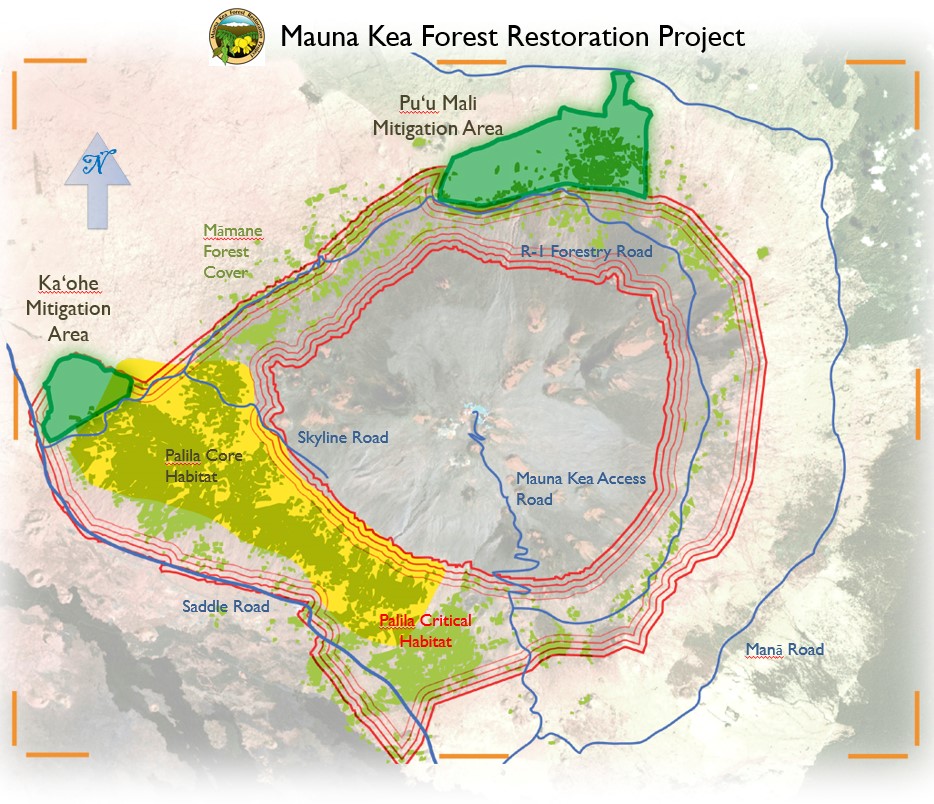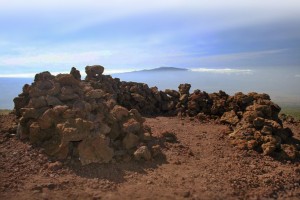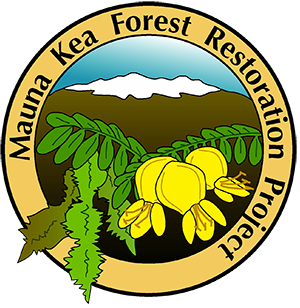Project Background
Project Background
 MKFRP was initiated as a result of the Saddle Road realignment project. The road was rerouted through lands designated as critical habitat for the federally endangered Palila. (Loxioides bailleui). In 2002, two areas on Mauna Kea were designated for restoration of māmane (Sophora chrysophylla) forest to mitigate the habitat loss.
MKFRP was initiated as a result of the Saddle Road realignment project. The road was rerouted through lands designated as critical habitat for the federally endangered Palila. (Loxioides bailleui). In 2002, two areas on Mauna Kea were designated for restoration of māmane (Sophora chrysophylla) forest to mitigate the habitat loss.
These areas are Pu‘u Mali Restoration Area (PMRA; 5,140 acres) on the north slope and Ka‘ohe Restoration Area (KRA; 1,400 acres) on the west slope. Both are State owned lands that were formerly leased for cattle ranching and are adjacent to existing māmane forest in the Mauna Kea Forest Reserve. Our goal is to extend the forest down to the lower elevations, increasing the year-round food availability for Palila. Fenced exclosures of each site were completed in 2006.
Since then MKFRP has been working to restore forest by removing feral ungulates, collecting seeds, propagating native seedlings, out-planting seedlings, controlling invasive plants, and removing predators from Palila Critical Habitat. The Hawai‘i Division of Forestry and Wildlife (DOFAW) and the Pacific Cooperative Studies Unit (PCSU) cooperatively manage this project.
Cultural Significance
 Rising more than 2.5 miles above sea level, Maunakea defines the landscape of the island of Hawai‘i, and is the state’s highest mountain. For Hawaiians it is a wahi pana, a sacred place. Maunakea is considered by some to be the kino lau of Wākea—the physical form of Wākea, the forefather of the Hawaiian people.
Rising more than 2.5 miles above sea level, Maunakea defines the landscape of the island of Hawai‘i, and is the state’s highest mountain. For Hawaiians it is a wahi pana, a sacred place. Maunakea is considered by some to be the kino lau of Wākea—the physical form of Wākea, the forefather of the Hawaiian people.
In ancient times, Hawaiians rarely traveled to high elevation sites as these natural areas were respected as wao ākua, or the realm of the gods. And so, the high-elevation, dry land forest of Maunakea were especially revered. The few specialists that did travel through this unusual forest, thick with māmane and naio thickets and humming with palila songs, were trekking to the summit area where rich dense basalt rock would be fashioned into adzes.
While limited, they did use the resources of the forest. On their journey, larger birds such as ‘ua‘u (Pterodroma sandwichensis) and nēnē (Branta sandwicensis) provided much needed food along with ‘ākala (Rubus hawaiensis) and ‘ōhelo (Vaccinium spp.) berries. Some of the forest birds’ feathers were collected and brought to the chiefs to be made into royal cloaks. And the hard wood of the māmane was particularly sought after to be crafted into adze handles.
And because of its sanctity, many shrines, burials, and kapu surround the mountain top. Let us respect this important mountain and tread reverently in our work there.
